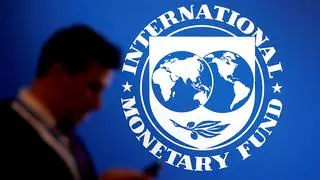Taking cue from performance of manufacturing sector supported by possible rebound in agriculture sector, Asian Development Bank (ADB) on Wednesday retained India’s GDP forecast at 7 per cent for fiscal year 2024-25. This is at par with International Monetary Fund’s (IMF) projection of 7 per cent, but lowers than the Reserve Bank of India’s estimate of 7.2 per cent.
“India’s industrial sector is projected to grow robustly, driven by manufacturing and strong demand in construction. Agriculture is expected to rebound amid forecasts for an above-normal monsoon, while investment demand remains strong, led by public investment,” the multilateral agency said in the latest edition of Asian Development Outlook. It has also maintained its growth forecast at 7.2 per cent for fiscal year 2025-26.
On Tuesday, the IMF said in the latest update of its World Economic Outlook (WEO) that it raised the country’s growth forecast for the current year by 20 bps to 7 per cent. The agency said the forecast for growth in emerging markets and developing economies is revised upward; the projected increase is powered by stronger activity in Asia, particularly China and India. “The forecast for growth in India has been revised upward to 7 per cent this year, with the change reflecting carry over from upward revisions to growth in 2023 and improved prospects for private consumption, particularly in rural areas,” the agency said.
Meawnhile, ADB said that services continued to expand robustly in Q4 of FY2023, and the forward-looking services PMI is well above its long-term average. Industry is also expected to grow robustly, driven by manufacturing and strong demand for construction led by housing. “After muted growth in FY23, a rebound in agriculture is expected given the above-normal monsoon projections. This is notwithstanding the slower advance of the monsoon in June. A rebound in agriculture will be important to sustain growth momentum in rural areas,” the agency said.
Further, investment demand continues to be strong, led by public investments. Bank credit is fueling robust housing demand and improving private investment demand. However, export growth will continue to be led by services, with merchandise exports showing relatively weaker growth. The stronger-than-expected fiscal position of the Central government could provide a further boost to growth. However, “this must be weighed against downside risks arising from weather events and geopolitical shocks,” the agency cautioned.
China’s forecast
Talking about China, it maintained growth forecast at 4.8 per cent this year. A continued recovery in services consumption and stronger-than-expected exports and industrial activity are supporting the expansion, even as the China’s struggling property sector has yet to stabilise. The government introduced additional policy measures in May to support the property market, the agency said.
For overall Asia, it slightly raised its economic growth forecast for developing Asia and the Pacific this year to 5 per cent from a previous projection of 4.9 per cent, as rising regional exports complement resilient domestic demand. The growth outlook for next year is maintained at 4.9 per cent “Inflation is forecast to slow to 2.9 per cent this year amid easing global food prices and the lingering effects of higher interest rates,” the agency said.







Comments
Comments have to be in English, and in full sentences. They cannot be abusive or personal. Please abide by our community guidelines for posting your comments.
We have migrated to a new commenting platform. If you are already a registered user of TheHindu Businessline and logged in, you may continue to engage with our articles. If you do not have an account please register and login to post comments. Users can access their older comments by logging into their accounts on Vuukle.